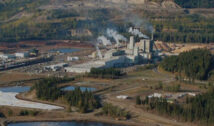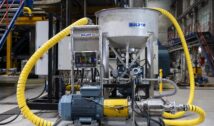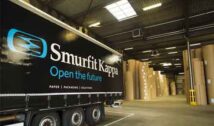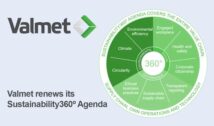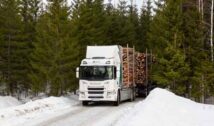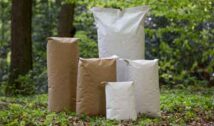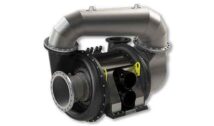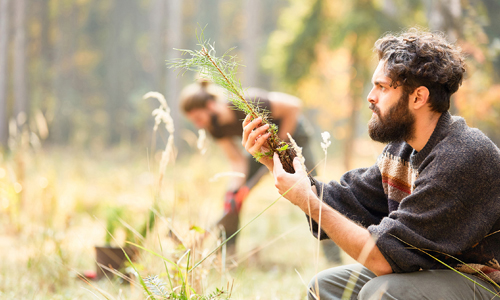
In times of rising concerns about climate change and environmental pollution, consumers are increasingly changing their behaviour and making more environmentally friendly choices. Consequently, sustainable products and alternative packaging materials are gaining momentum. Made from wood, paper bags are based on a renewable resource. In Europe, their raw material is sourced from sustainably managed forest areas. The platform “The Paper Bag”, the association of Europe’s leading kraft paper and paper bag manufacturers, explains the significance and why paper bags are a sustainable solution.
“Most people are aware that paper is a sustainable packaging material. However, there seems to be some uncertainty about its sourcing,” says Kennert Johansson, Acting Secretary General of CEPI Eurokraft.
“In contrast to logging practices from hundreds of years ago, when trees were cut without considering reforestation and forest care, our industry has established sustainable forest management as a key element in the value chain of European paper carrier bags.” Especially, in the last thirty years, the European kraft paper and paper bag industry has put a lot of effort into increasing sustainability in their forest
management and harvesting practices. These include ensuring valuable bioproduction and safeguarding the diversity of flora and fauna, recreational values and cultural heritage. The term sustainable forest management was defined in the early 1990s1. It denotes the use of forest areas in a way that maintains their biodiversity, productivity, regeneration capacity, vitality and potential to fulfil relevant ecological, economic, social and cultural functions. Not only for today, but also for future generations, and without causing damage to other ecosystems.
Maintaining the forest “Ensuring the balance between society’s increasing demands for forest products and the preservation of forests’ health and diversity involves continuous evaluation, planning and maintenance,” explains Johansson. “This way, forests also create different kinds of jobs, thus being an important economic factor for local communities.” Forest managers are responsible for assessing the land, keeping track of the types and health status of existing trees, and determining how trees can be harvested to ensure successful regeneration and continuous rotation of forests,maintaining their environmental and social functions.
Growing healthily
Wood harvesting can be done in many ways, which allow the imitation of natural dynamics and the achievement of a balance between a forest’s productive functions and its ecosystem services. The thinning of younger trees helps their healthy growth. With selective felling of mature trees, the remaining ones are protected for further growth and the growth of new trees is encouraged in open spaces. “The better we manage this process, the better our forests grow,” says Johansson. “In sustainable forest management all harvested sites are reforested,
and average harvesting volumes do not exceed the amount of forest growth due to reforestation.” Thanks to sustainable management of forest lands, Europe has had a positive net change in forest area during the last 25 years. During this period, the forest area has increased by 17.5 million hectares. This corresponds to almost half of the area of Italy2.
Regulating the climate
This regular felling and replanting of trees not only protects the forest, but makes it more productive, too. Young trees convert more CO2 into oxygen and store more carbon than old ones. The average annual sequestration of carbon in European forest biomass amounts to 719
million tonnes of CO2.3 This offsets the fossil CO2 emissions generated annually by Germany4.
Furthermore, as a wood product, paper continues to store carbon throughout its lifetime. This carbon sequestration time is extended when we recycle the paper.
Fostering biodiversity and ecosystem services
Forest ecosystems are home to roughly 80% of the world’s land-based animal, plant and insect species. Protecting this biodiversity is one of the most important tasks of sustainable forestry5. One example is that some natural areas of standing and fallen old trees are deliberately left in the forest to serve as a home and food substrate for small animals and insects. Different forest types, from natural forests to plantations, together with a network of various nature conservation areas, complement each other in fulfilling different functions, for example as productive or recreational areas or biotopes. “A function all forest types have in common is the protection of soil and water courses,”
states Johansson.
Giving transparency to consumers and brand owners
The easiest way to tell whether a product is made of raw materials from sustainable forestry is to look for imprinted labels of the FSC® (Forest Stewardship Council®) or PEFC™ (Programme for the Endorsement of Forest Certification™). Both are non-governmental organisations established to promote the responsible management of the world’s forests. To achieve certification, forest owners must meet a set of comprehensive criteria and indicators. The requirements of the FSC® and PEFC™ are basically similar but with slightly different approaches.
They relate to a forest’s health and productivity, biodiversity and ecosystem services, as well as its socio-economical functions. “Certification is the best way to ensure that the fibres we use for our paper bags are sustainable fibres,” says Johansson. “By choosing paper bags, onsumers and brand owners make a responsible purchase decision that contributes to climate change mitigation.









